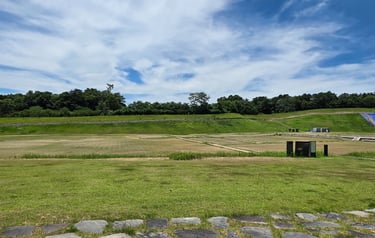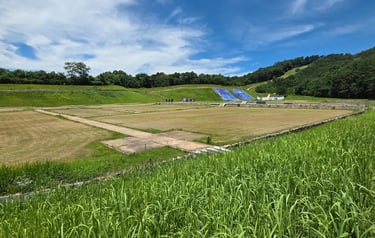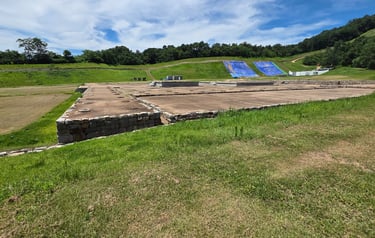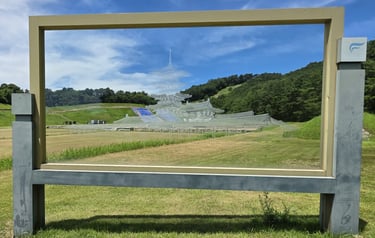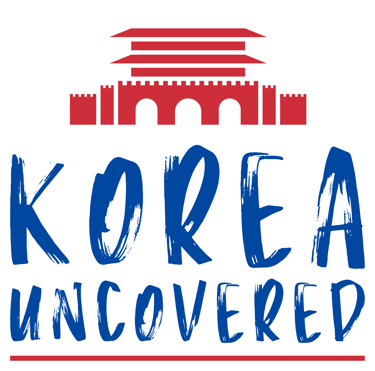
Temples and Monastaries
Bulguksa Temple
Bulguksa Temple is located on Tohamsan Mountain in Gyeongju and is associated with Seokguram Grotto. Both sites are combined as one inscription on the UNESCO World Heritage List. The temple was constructed during the Silla period, between 751 and 774, which are the same dates of construction for Seokguram Grotto. As with many sites in South Korea, some of the Bulguksa Temple buildings were destroyed in 1593, during the Imjin War and restoration work at the site was carried out from 1969 to 1973. As well as the temple being a UNESCO protected heritage site, there are many separate parts of the site that are specifically recognised by the Korea Heritage Service. Seven have the status of national treasure. They are the Dabotap Pagoda, the three-storey stone pagoda, Yeonhwagyo and Chilbogyo bridges, Cheongungyo and Baegungyo bridges, a gilt-bronze seated Vairocana Buddah, a gilt-bronze seated Amitabha Buddah and reliquaries from the three-storey stone pagoda which are housed in the Central Buddhist Museum. A further five items have been given the status of treasure. They are a stupa, a stone basin, Daeungjeon Hall, the stone elevation and two different listings for Buddhist paintings.
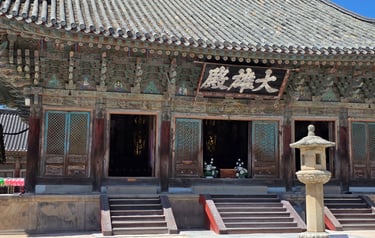




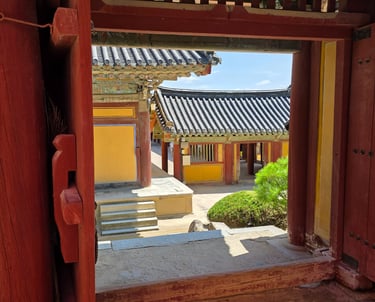
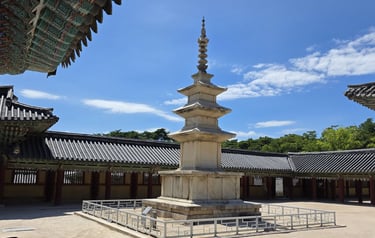




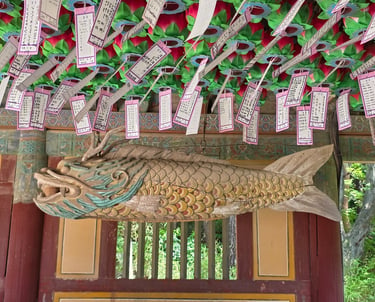
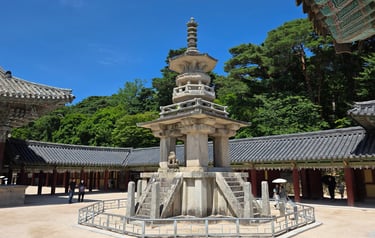

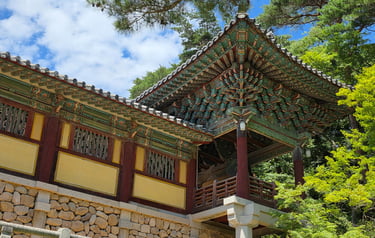

Although the temple is some distance from other sites, transport options are good. The buses to both Bulguksa Temple and Seokguram Grotto run fairly frequently and you can get schedules for Bulguksa, Seokguram Grotto and other tourist bus services at the information centre in Gyeongju Train Station. If you are visiting Bulguksa Temple it is definitely worth the extra bus ride of around 30 minutes or so to visit Seokguram Grotto, which is further up the mountain. The grotto itself is unique and the Buddha and other images are beautiful examples of Buddhist art. There is a lot to see at Bulguksa, so make sure you allow plenty of time to look around. If you want to have a leisurely visit then plan for at least half a day for Bulguksa Temple, and at least 2 hours for Seokguram Grotto. Both include travel time. Refreshments and souvenirs are also available on site.
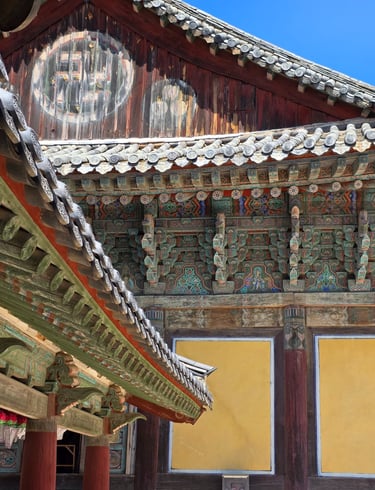

Bunhwangsa Temple
Bunhwangsa Temple is located around a 30-minute bus ride away from the Cheomseongdae area in Gyeongju, right next to the remains of Hwangnyongsa Temple. Bunhwangsa dates to 634 and was built by Silla’s first female ruler, Queen Seondeok (632 to 647), whose tomb lies a short bus ride away. Little of the original temple survives due to a series of past wars and invasions, but a particularly noteworthy remnant is a beautiful three-story stone brick pagoda. Today, the pagoda stands at over nine metres tall, but it is thought to have originally been much taller. It has wonderful sculptural detailing, making it stand out from other temple remains. The pagoda features stone lions at each of its four platform corners, with one of them being subject to past restoration, whilst each of the four sides of the pagoda has an entrance flanked by guardian deity sculptures.


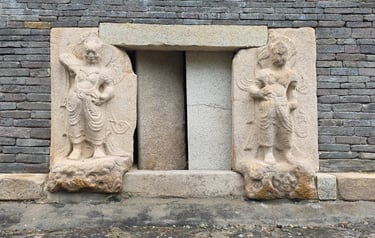

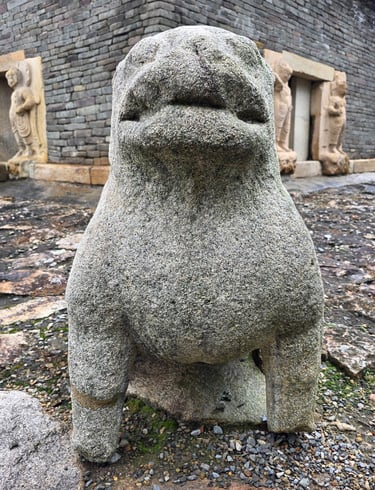

Gameunsa Temple
Gameunsa is a Silla period Buddhist temple site just a short drive away from the Silk Exhibition Hall and Workshop in Dusan-ri, Gangwon-do, as well as the sea tomb on King Munmu. In fact, Gameunsa Temple was built by King Munmu, although he died before construction was completed. The two sites - Gameunsa Temple and King Munmu’s burial - are connected by the common theme of being used to help protect the nation from invaders. Gameunsa Temple was built as a site to pray for protection, whilst King Munmu was buried at sea in order to become a dragon that would protect his people from the same invaders. Originally, the temple consisted of several buildings. Today, the site survives mostly as archaeological remains, with fairly significant ground level masonry surviving along with two three-story pagodas, one of which is not currently wholly visible due to protective netting.


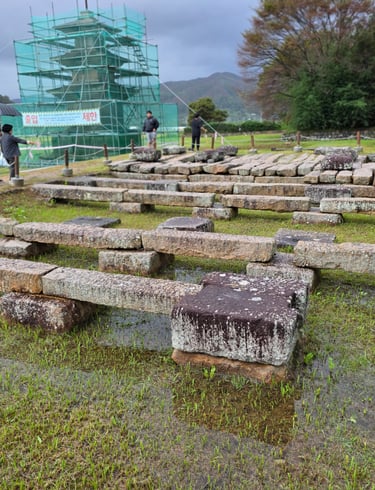

Golgulsa Temple
Golgulsa Temple dates to around 1,500 years ago and is located in the Mount Hamwolsan area of Gyeongju. It has a very different feel to it to many of the other temples mentioned as it is still a very active Buddhist temple site offering both templestay programmes and regular Seonmudo (Buddhist martial arts) performances. At the highest visible point of the temple is a large Buddha carved into the stone cliff and there are 12 different grotto areas that are still used for a variety of purposes. Vairocana is the main Buddha Hall and this can be reached by climbing the central staircase that will also eventually take you to the large rock carved Buddha statue. There are also many other areas to explore and various interesting sculptures and statues dotted around the grounds.

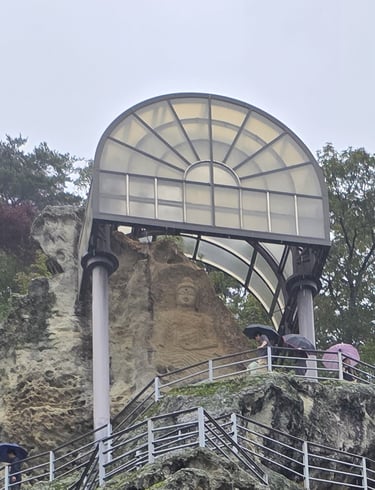
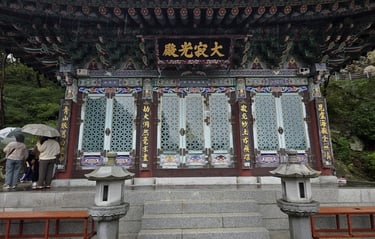



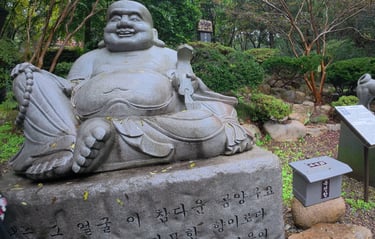

Jeongnimsa Temple and Museum
Jeongnimsa Temple is a Baekje Kingdom Sabi period (538 to 660 CE) temple site in Buyeo. Excavations at the site took place in the 1980s and these confirmed the locations of several buildings. At the site today visitors can see a reconstructed temple building, the location of several other temple buildings, a display explaining excavations at the site and a pagoda. The pagoda is known as the Baekje Five-story Pagoda and is one of only two surviving Baekje Kingdom dated pagodas. Jeongnimsa is one of the sites that make up the UNESCO World Heritage listing of the Baekje Historic Areas, particulary because of the pagoda being located there. There is also a small museum next to the site called Jeongnimsaji Museum that houses some of the artefacts found on the site, a scale model of the temple and various interactive displays.
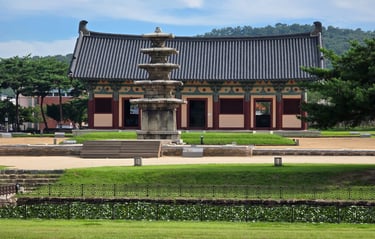

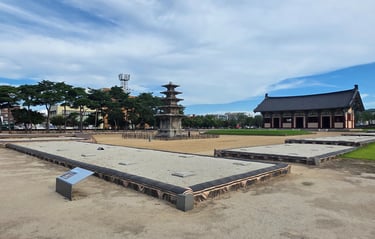


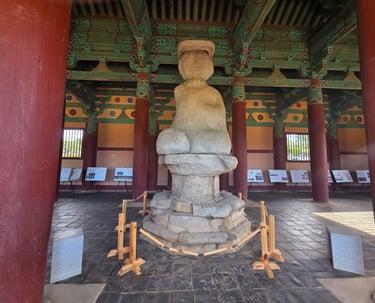

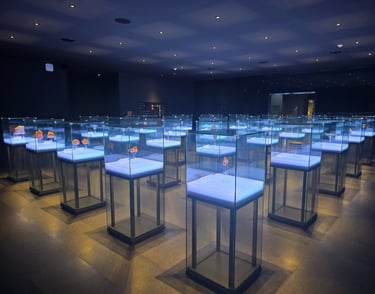
Neungsan-ri Temple
The Neungsan-ri Temple site sits right next to Buyeo Royal Tombs Park and you gain entry to the site through the park. This area is away from the main cluster of heritage sites in Buyeo, so requires a short bus or car ride to visit. The site is next to the small art museum and replica tomb associated with Buyeo Royal Tombs Park and consists of a field with archaeological remains. The Buddhist temple that once stood there dated to 567 CE and was used by a royal family of the Baekje Kingdom. It consisted of several buildings but only foundations and other scant remains can be seen today. Site interpretation includes a glass framed etching of the site so that visitors can understand what the temple might have looked like when it was in use, which is a nice addition. The famous gilt-bronze incense burner of Baekje, which is on display in nearby Buyeo National Museum, was found here.
